DoE, as simple as preparing a “suspiro de limeña” (II)
- Daniel O
- 4 ene 2020
- 3 Min. de lectura
Actualizado: 17 oct 2021
First part of the experiment show how “suspiro de limeña” was prepared. Just to remember it, we will make a brief review of some concepts. Four factors were defined (fruit, sugar, time and milk) with a certain number of levels. For example, there were four types of fruits or four levels (fruit: passion fruit, aguaymanto, soursop,and lucuma). The design of experiments generated from the information provided consisted of 48 runs or combinations of factors at different levels. The manjar de yema (manjar of yolk) obtained from each combination or run was evaluated and assigned a color value. Three different people evaluated color. A color scale from 1 to 10 was used, the lower value indicated a lighter hue color. In table 2, shown previously, the symbols “Std” and “Run” was observed in the first two columns. Those words come from "Standard order" and "run order." The “Std” presents the order of the tests in which the experiments would be carried out if they do it in the standard order or in the order of Yachts. The Run presents the order in which the run should be performed to do it randomly. Proper design of experiments should ensure the randomness of the runs. Data Analysis Table 3 shows the analysis of variance of the data. It can be assessed that the model obtained has a strong influence on the type of sugar (B) and fruit (A), as well as the interactions AB (type of fruit vs. sugar) and AD (type of fruit vs. milk ) It can be seen that time does not appear as an influential factor. It is also observed that milk influences as interaction with fruits. An interaction occurs when the response is different depending on the combination of two factors.
Tabla 3. Variance analysis of model.
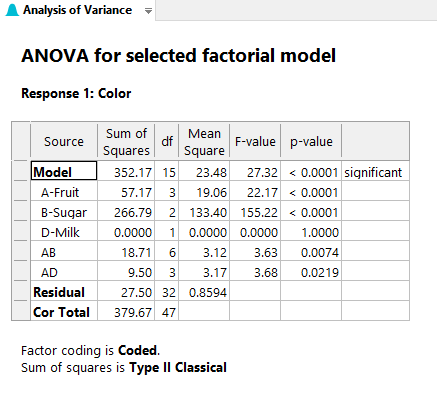
One Factor Graphic In Figure 2-A, we can see the influence of the type of fruit, in this figure, it can be seen that lucuma reaches the highest color values and the cherimoya the lowest values. In addition, in Figure 2-B, it has shown the significant influence of sugar on color, reaching a higher value when using chancaca.
(A)
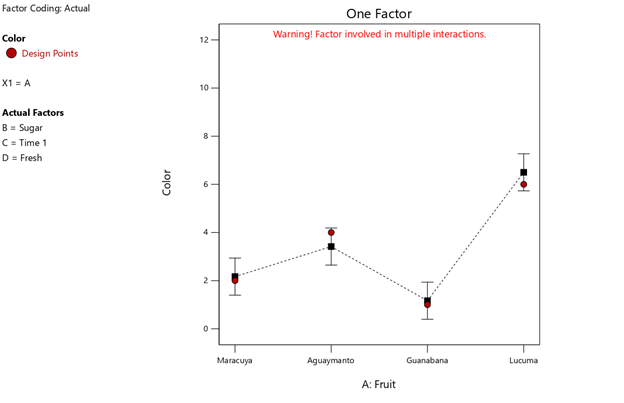
(B)
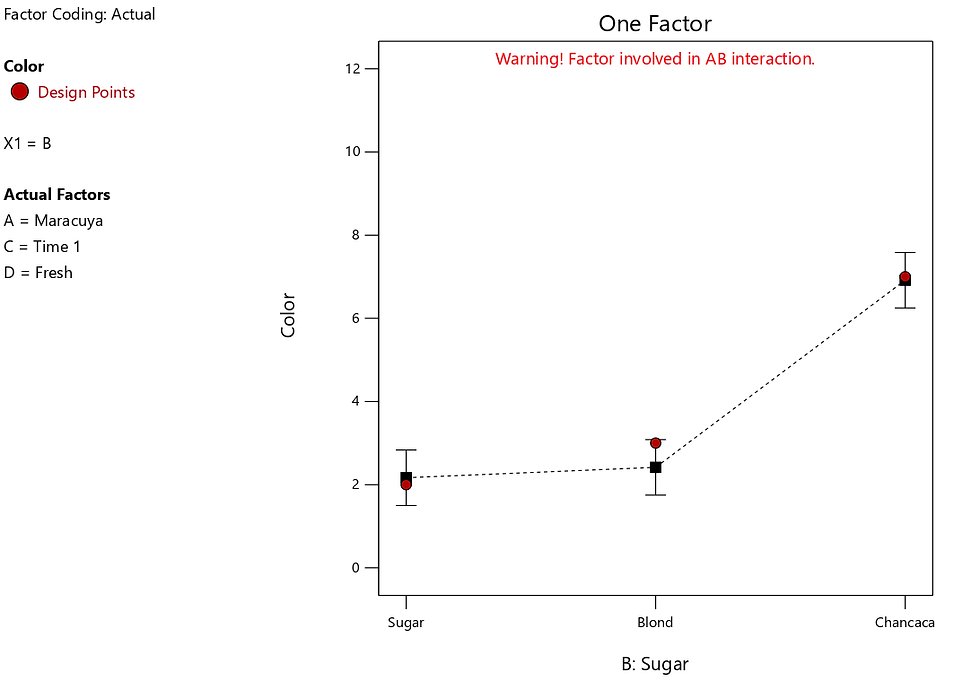
Figure 2. One factor graphic: Color vs. type of fruit (A) and Color vs. type of sugar (B). Interactions graphs The graphs of interactions between sugar and fruit with different types of milk are shown in Figure 3. The color of each line represents a type of sugar: blue for chancaca, red for white sugar and green for blond sugar. It can be seen that the color of the "Suspiro de Lima" delicacy has a darker hue when chancaca is used, on the other hand, the color is very similar when blonde or white sugar is used. The hue is darker when using the chancaca with fresh milk compared to the delicacy when evaporated milk is used. Finally, it can be seen that the cherimoya presented the hue of lighter delicacy compared to the other fruits.

Figure 3. Interactions graphics: Fruit vs. fresh milk (A), and Fruit vs. evaporate milk (B) Final comments The design of experiments allows me to maximize the information I can obtain by creating various combinations or trials that will allow me to measure the influence of each factor involved in my selected response. In our example, you can observe the changes or influence on color by varying the fruit, milk, and type of sugar. Similarly, cooking time can be ruled out. It was required to use twice the required amount of fruit from the initial recipe to be able to make an evaluation of the dispersion of the delicacy (next article at your request). In addition to the ANOVA analysis, you must also be able to carry out the analysis of residuals, of variance inflation value and you can obtain graphs with the data obtained in a very friendly way using Statease® Design-Expert® software (Minneapolis, USA). www.statease.com

Figure 4. "Suspiro de limeña" by Karina A.- Lima, 2020.
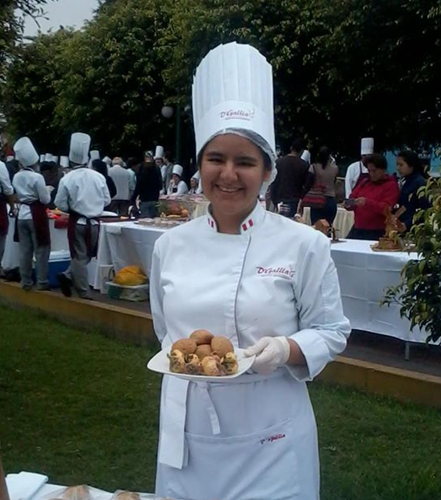
Acknowledgment A special thanks to Karina, who was in charge of making this delicious dessert.
Karina studied pastry and since 2011 she has specialized in the preparation of desserts using Peruvian products and creating nutritious recipes. Karina has also specialized in cake decorating. Their goal is to create healthy dessert recipes showing that they can be rich and nutritious at the same time.
Search @postresparacualquierocasion en Facebook o Messenger to find more information about his creations. ©Daniel Obregón, 2019

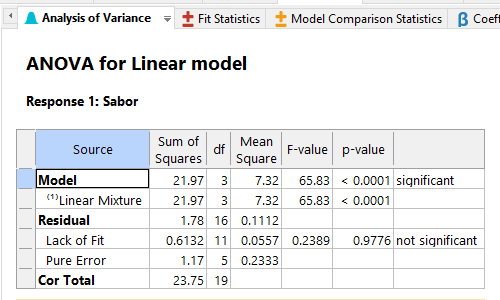
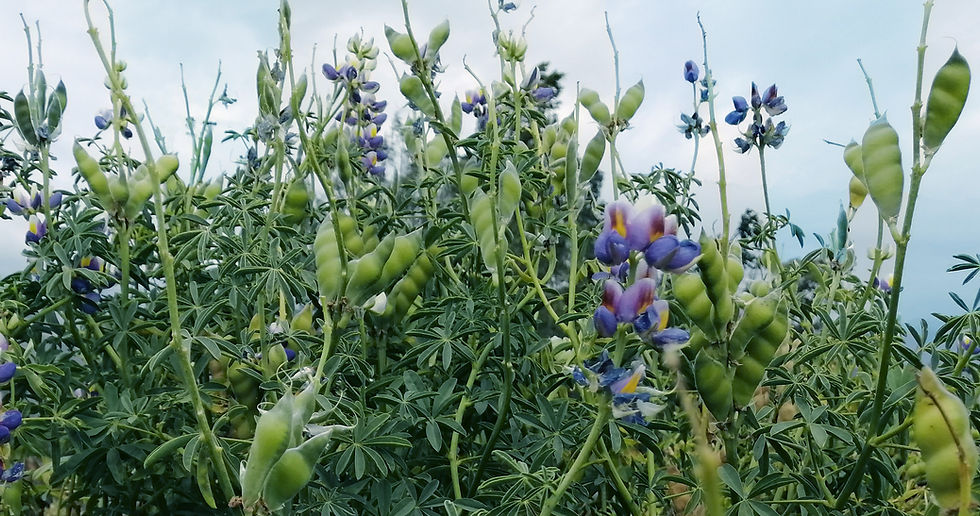
Comentarios